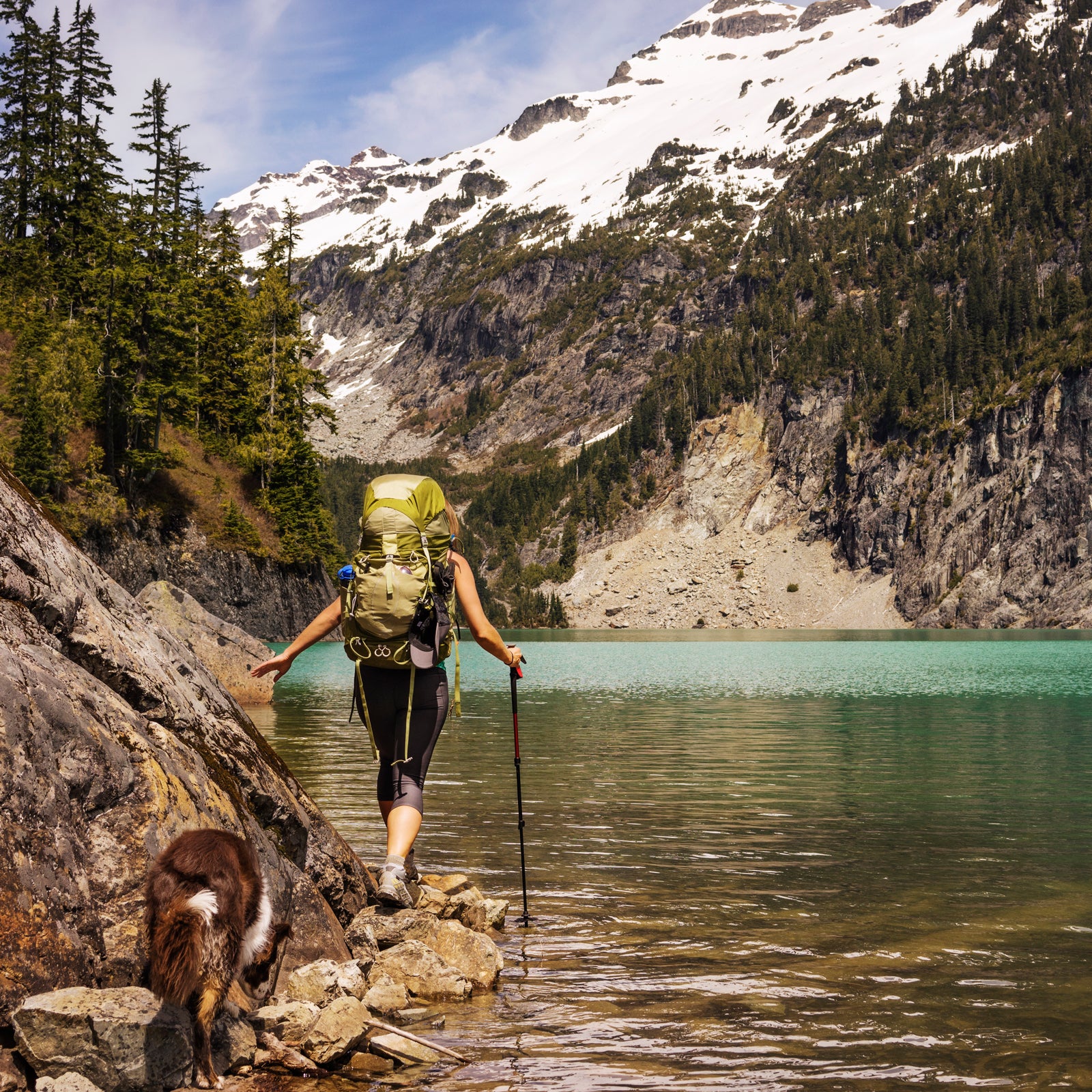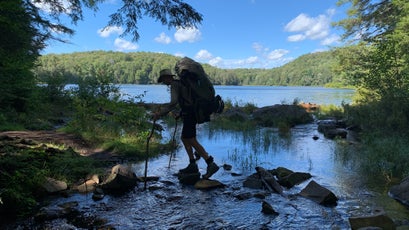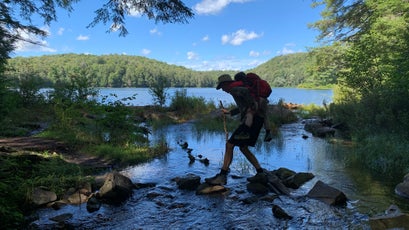Partway through a late-summer backpacking trip a few months ago, I realized I had become a trekking pole guy again. I’ve flirted with the concept before: I took a pair of borrowed poles on a 10-day hike in the northern Rockies 15 years ago, and bought a knock-off Leki pole in Kathmandu before a three-week trek in the Himalaya. But I’ve always been lukewarm about them. They feel fine, but I really like having my hands free for snacking, picture-taking, map-reading, scrambling, and so on.
On my most recent trip, I initially picked up a walking stick because the so-called trail we were following—the , in Algonquin Park—turned out to be one long river of rock-strewn, boot-sucking mud. I needed the stick to test whether my next step would be thigh-deep or merely ankle-deep, and to double-check my balance while piggybacking my kids across fast-flowing creeks. But then one of my daughters asked me to carry her stick for a while—and soon I’d settled into a comfortable two-poled rhythm, even on the rare stretches of firm ground. When my daughter asked for her stick back, I told her to find another one.
Trekking poles elicit mixed feelings. Their boosters certainly love them, and not just in the backcountry. “People will still say, ‘Hey, you forgot your skis!’” an “urban poling” instructor a few years ago. “We’re going to change that. In Europe, they look at you kind of funny if you walk around without poles.” On the other hand, the Switzerland-based International Climbing and Mountaineering Federation sounds a more skeptical tone, that using poles too much will sap your balance and coordination, thus raising the risk of accidents in situations like crossing ridges that are too narrow for poles.
There have actually been quite a few studies investigating the pros and cons of pole use, and they’re summarized in by Ashley Hawke and Randall Jensen in Wilderness & Environmental Medicine. This isn’t a meta-analysis that aggregates the results of a bunch of studies into one big dataset, because the studies all tackle slightly different questions in slightly different contexts. But bringing all the studies together in one place allows us to extract some common themes. Here are the highlights:
You Burn More Calories with Trekking Poles
This is a fairly consistent finding. By some estimates, it’s about a 20 percent calorie bonus thanks to the added demands of using your upper body muscles. To the urban polers of the world, this is : the pounds will melt away! To the curmudgeons of the International Climbing and Mountaineering Federation, this just means you’re straining harder to accomplish the same thing: your heart rate, breathing, and energy expenditure will all be elevated. One caveat: you don’t get the extra calorie burn just from carrying the poles with you. You have to actively drive them into the ground.
You Walk Faster and/or It Feels Easier
All six of the relevant studies in the review found that subjects tended to walk faster with poles. It’s not because you’re propelling yourself forward with arm power, though. Instead, the poles seem to enable people to adopt a more normal walking gait, with longer and quicker strides, particularly while carrying a pack or climbing a hill. That gait assistance is also why poles are and other movement disorders.
Interestingly, even though you’re burning more calories in the process, the poles seem to reduce perception of effort while going uphill with a pack. That’s significant, because some scientists argue that perceived effort is what really determines your pace and willingness to continue.
You Take Some Load Off Your Joints and Muscles
When you’re walking downhill (and to lesser extent on level ground), poles take some of the load off your joints. That means the forces and torques on your knees and ankles are smaller, which could be particularly beneficial if you’ve got joint problems like osteoarthritis, or if you are older or overweight. Poles also help you brake when you’re descending, reducing the eccentric muscle contractions that damage your muscles and leave your legs sore the next day.
As you’d expect by now, the International Climbing and Mountaineering Federation sees the glass-half-empty perspective on this: by unloading the joints, you may be missing out on training your braking muscles, and missing out on the joint stress that triggers adaptations in your knee cartilage.
You Balance Better
This is intuitively obvious, but scientists have indeed confirmed that it’s true by, for example, having subjects walk across a 10-foot “simulated log.” An interesting nuance: according to , you need two poles to improve your balance when you’re carrying a heavy backpack, but only one pole to improve when you’re unloaded. Whether it’s true that long-term pole use hurts your balance remains untested.
So, in summary, you burn a little more energy with poles in exchange for better balance, less joint stress, faster speed, and less effort. The margins are mostly pretty small, and you have to weigh them against the intangibles, like having free hands or hearing taunts about forgetting your skis. Then, as I discovered this summer, there’s the possibility of leaning way forward and resting your forehead on your pole to temporarily take the load of an overstuffed pack off your shoulders and hips while you wait for your wife to extricate your youngest daughter from yet another bottomless mud pit. I don’t plan to start taking poles on my neighborhood strolls. But if my next backpacking trip is anything like my last one, I’ll seriously consider bringing proper poles instead of stealing my daughter’s walking stick.
For more Sweat Science, join me on and , sign up for the , and check out my book .




